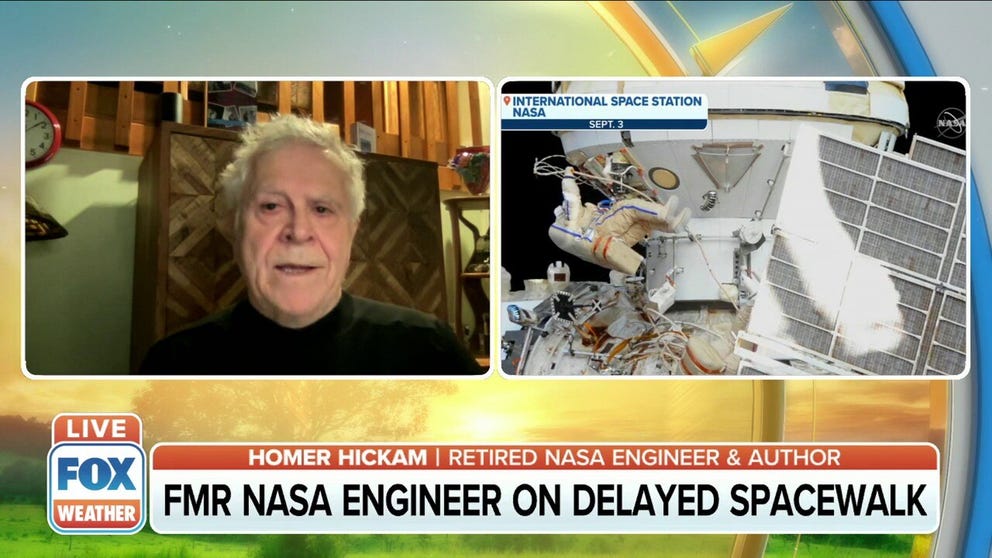NASA astronauts' spacewalk scheduled for Thursday after previous delay
The scheduled spacewalk will be to replace a faulty antenna system on the station’s truss structure.
Astronauts are scheduled for a spacewalk Thursday after NASA determined the orbit of the debris no longer poses a risk.
NASA mission managers originally called off the spacewalk for Kayla Barron and Thomas Marshburn the night before they planned to exit the International Space Station airlock due to a space debris notification.
Officials say that delaying the spacewalk provided an opportunity for NASA to evaluate the risk from the debris notification.
The scheduled spacewalk will be to replace a faulty antenna system on the station’s truss structure.
Barron and Marshburn were scheduled to exit the space station early Tuesday, but on Monday evening, the space agency said it received an alert of space debris for the ISS.
Former NASA engineer explains why spacewalk was delayed
Homer Hickam, best-selling author and retired NASA Engineer, explains why the spacewalk scheduled for Nov. 30 was delayed.
NASA did not disclose if the space debris was associated with the recent Russian anti-missile test that destroyed a satellite, creating thousands of new pieces of space trash in low-Earth orbit.
"Due to the lack of opportunity to properly assess the risk it could pose to the astronauts, teams have decided to delay the spacewalk planned for Tuesday, Nov. 30 until more information is available," NASA wrote in a blog post. "The space station schedule and operations are able to easily accommodate the delay of the spacewalk."
LEARN: Why space trash will continue to be a problem in low-Earth orbit
During a news conference on Monday, NASA managers spoke about how the agency calculates the risk of a spacewalk, also known as an extravehicular activity or EVA. It was a more complicated process for this EVA after Russia destroyed one of its satellites during an Anti-Satellite (ASAT) test earlier this month, creating approximately 1,500 pieces of space junk and forcing the seven astronauts to shelter. NASA said every 90 minutes; the ISS would pass near the debris field.
NASA's ISS deputy program manager Dana Weigel said the spacewalk was at an elevated risk for a debris strike to the crew by 7%. Still, she stressed that it is within the same risk "family" as previous spacewalks over the last few years.
"EVA has always been risky," Weigel said.
Astronauts wear pressurized spacesuits outside the ISS that are essentially mini-spacecraft to keep them alive. These are more vulnerable to smaller pieces of space debris than the ISS. The space station itself can be maneuvered to avoid a space junk strike. NASA did not say if a debris avoidance maneuver would be necessary.
Barron and Marshburn will spend more than 6 hours outside the space station to replace a faulty communication antenna system on its truss structure when the spacewalk is rescheduled. NASA managers said the antenna could no longer send data back to Earth, but it could still upload to the station. Before it went down, the antenna worked on the space station for more than 20 years.
In the meantime, NASA, the Department of Defense and international partners are still cataloging and adding all the new Russian debris to databases.
The Department of Defense's global Space Surveillance Network sensors track nearly 30,000 pieces of space debris. Some of these items include rocket hardware and defunct satellites. However, some trash is too small to be tracked.
With the Russian test debris, Weigel estimated there are about 1,700 new larger objects that are being tracked.
"It will take a few months to get all of those cataloged and into our normal debris tracking process, where we can then assess miss distances or how close these items get to ISS," Weigel said. "That's still work in front of us as those items get cataloged."
